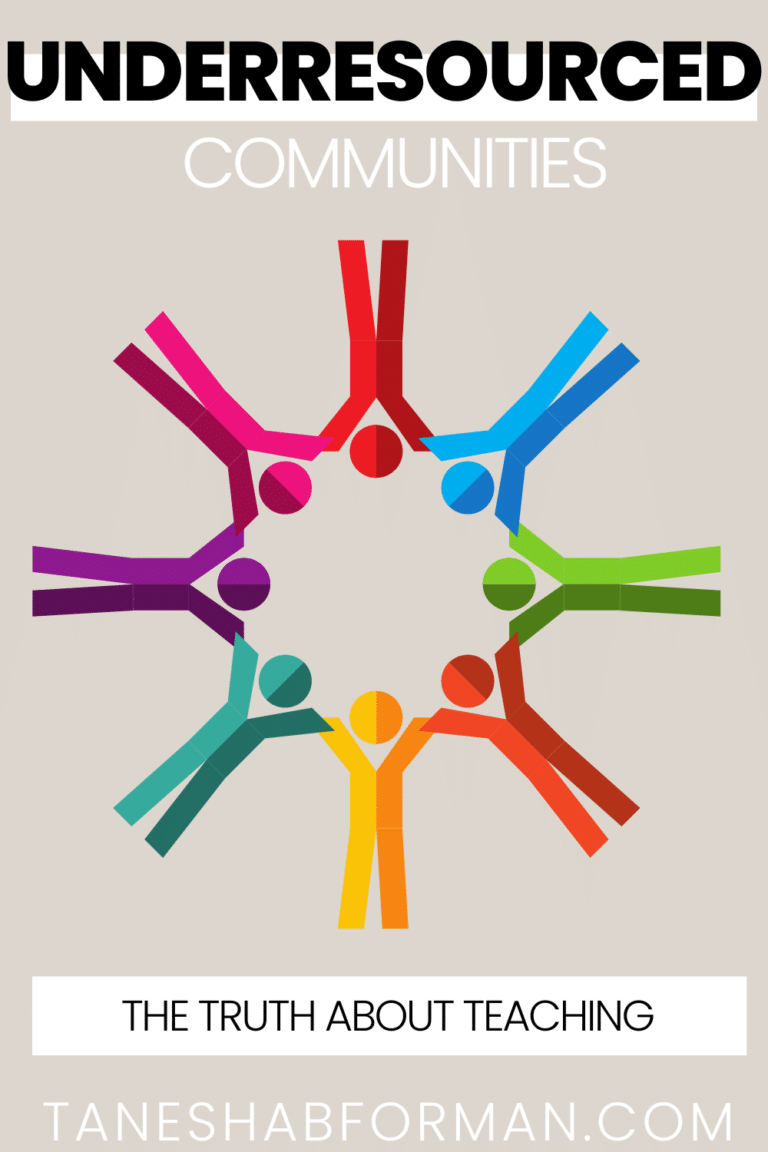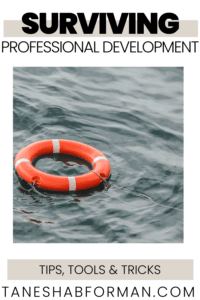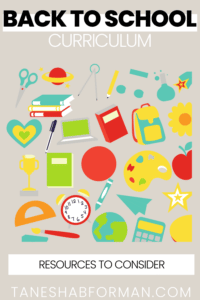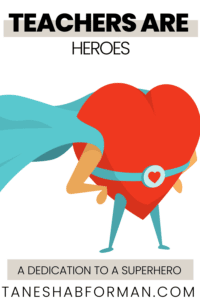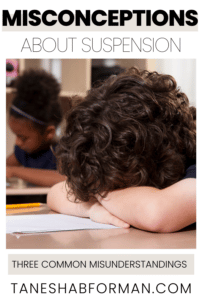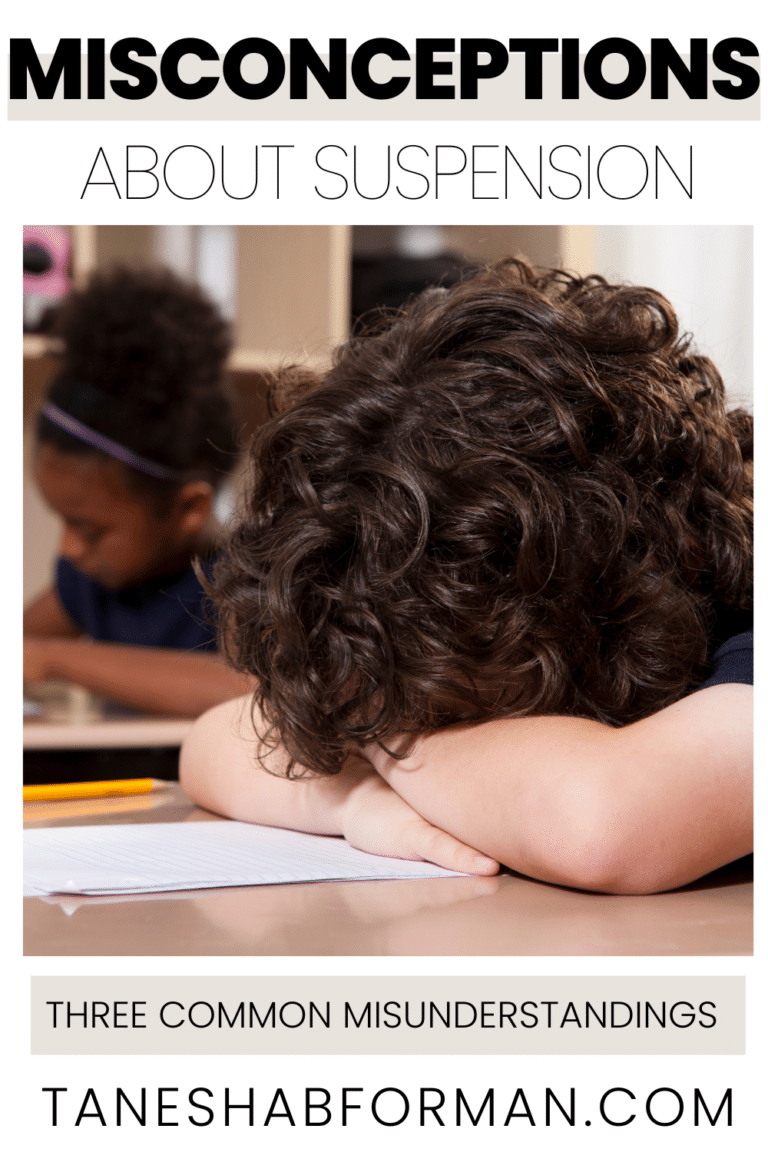
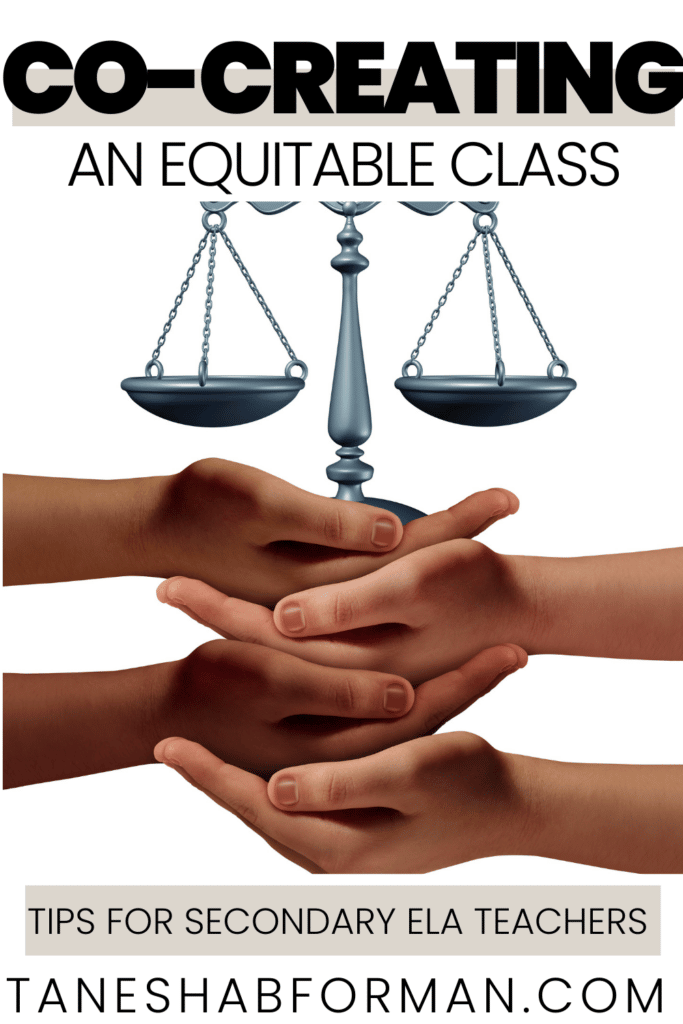
Co-Creating an Equitable ELA Classroom
But, what is equity?
The existence in which all people or groups are given access to the correct number and types of resources for them to thrive; This is NOT the same as equality. Equity requires teachers to understand:
- the unique challenges and barriers faced
- the nature of oppression and gaps in the community
- the deliberate action needed to maximize potential
One of my prevailing views as an educator that has evolved over time is my belief that our spaces need to be co-created with students. If you are thinking “co-created,” stick with me for a minute. I believe that the classroom is for students. Call me radical, but that’s my belief. When students co-create the classroom norms, it communicates to students that they have ownership over the space. This will set the ground rules for a student experience in which students feel emotionally safe and supported. With all norms, teachers will have to revisit them continuously, and in some cases revise them, but there’s power in obtaining buy-in from the community.
Creating Conditions for the Learning Environment
Many teachers and schools first begin by setting the conditions for students to engage. This can be completed using several strategies that include co-creating a classroom contract, or agreement, thinking through structures for receiving feedback from key stakeholders, and having clarity on classroom procedures.
Co-creating a classroom community where everyone feels seen, valued, and primed to engage in high-quality lessons is a critical component of an equitable classroom space. Students have many emotions and life circumstances that they are balancing, and sometimes need a window to be celebrated and to share concerns. I am intentional in providing students opportunities to interrogate their core beliefs about an ideal (e)learning environment, and developing life-long career habits. I prioritize time for students to reflect on the feeling of the classroom they want to be true. The community agreement is a “living” document that can be adjusted as needed. Strive for Agreements that BUILD (editable copy):
Communication with Families is another important component to developing your classroom community. Note: The word “family” is used intentionally to convey the fact that in many communities, a “village” approach is taken when raising children. Research proves that the involvement of parents, guardians, or other key stakeholders students value is a key element to student success in their K-12 careers (Henderson & Berla, 2004). If families are connected to the school, then they are more likely to be invested in the education of their children. Therefore, teachers should have a plan for engaging families and learning about who is important to the student. Communication should not be seen through a transactional lens, but rather as an opportunity to forge a relationship and trust. Interactions should be grounded by the belief that families know best and deeply care about their children. This can be done by:
- Surveys (sample questions)
- What are some of your child’s strengths?
- How does your child learn best?
- What topics do you believe are essential for your child to learn in <insert class>?
- What’s the best way for us to connect about your child’s experience in class?
- Flexibility in Meeting Way and Days
- Inviting families to school events
- Calling to celebrate student growth
- Determining how/how you collect feedback from families
- Advocating for school programs that engage families
- Listening and learning from families
Prioritize Social and Emotional Safety
Morning Meetings – Given the often tight class structure of the ELA classroom, I leverage surveys (example) via Google classroom that students have time to complete at the end of each lesson. The survey provides space for students to share if they need a check-in, feedback they have about the class, and/or a shout-out for a teammate. My class starts with shout-outs and rotates between bringing a feedback point to the group, and highlighting trends in work. These “meetings” are quick. I maintain them throughout the year so that students always have a way of advocating for their needs, and to emphasize the importance of developing and maintaining relationships.
Embrace Identity – Students should thrive in their classrooms. The ability to thrive connects to opportunities to be who they are, learn about others who are different and infuse what they are learning with who they are becoming. This is identity work. Furthermore, research suggests that students are more likely to experience success if the curriculum validates and affirms their identities (Noguera, 2003). Therefore, the foundation of learning should start with who we are, how we are perceived, and who we aspire to be. Self-work is for students AND teachers. When we are in tune with who we are, we can question and work on challenging systems that perpetuate prejudice and uphold white supremacist ideals. Additionally, identity work provides space to critically evaluate the role of language and literacy in our education while also reflecting on how biases influence our beliefs about historically marginalized people. Imagine how this enhances learning and discourse in classes. Students and teachers will be revisiting and revising their own stories through the curriculum (Muhammad, 2020).
From a classroom community standpoint, teachers should be mindful of how they will approach breaches to the community contract or agreements, especially when the breach impacts someone’s identity. This conversation should happen when making the agreements. Potential questions:
- What if a commitment is breached? What action(s) will we take?
- What if our actions cause a community member to feel unsafe?
- What words or actions do we commit to ensure everyone feels safe and valued?
- How will we maintain and monitor our agreements?
- What should you do if you feel negatively impacted by something that happens in class?
Bottom line, don’t gloss over identity. The curriculum walks in with our students. To engage in conversations about identity, I’ve created this resource (and I’m currently overhauling it). By giving students space to reflect on how their identities interact in school, teachers empower students to be their authentic selves. This sets the table for classroom environments where people are seen and respected. Remember, this practice has to watered and nourished in order to develop.
ELA
Reader/Writer profiles – As a lifelong reader, I’ve enjoyed experiencing the fluidity of my reading and writing habits. Reflecting on how my reading and writing identities have grown over time reveals a bit about who I am. It’s a part of me that I share with students who sometimes have the binary belief that you are either a reader or not. We learn about our reading interests by reflecting on what we read, when we read, and who we enjoy reading about. Reader profiles also embrace the fact that we change over time. The beginning of the year is the perfect time to engage students in creating a reading profile that should be returned to throughout the year. For best practice, teachers should share their reading profiles with their students, and engage them in the key idea that who we are as readers changes in the same way our interests do. Writer profiles are similar. Here are templates to get you started. The template is intentional in using pictures because I believe in the power of allowing students engage using different formats. Some students might want to write, while others might want to use bullets. This profile serves to activate student reflection about who they are as readers and writers.
Independent Reading – There is so much research on the impact of allowing students to self-select the books they read (quick read here). I think of the process of updating my library in the same way that I think about updating my wardrobe (don’t judge me). It’s an ongoing process. Seriously, reflect on how you’re holding space for independent reading, and what books are available for your readers. Here’s an audit to help think through representation in your classroom library. Depending on your school district, you might be eligible to order from First Book, which is what my school uses to get books for our students. They offer deep discounts so that schools can purchase more books for their students. As a rule of thumb, I usually order all of the Project Lit book selections (check for content!). Below are some of my favorite middle and YA books! I narrowed it to 6, but I could go on for months about books!
- Other Words from Home by Jasmine Wargo
- Aristotle and Dante Discover the Secrets of the Universe by Benjamin Alire Sáenz
- Poet X by Elizabeth Acevedo
- Patron Saints of Nothing by Randy Ribay
- Monday is Not Coming by Tiffany Jackson
- The Benefits of Being an Octopus by Ann Braden
Additional Resources:
Works Cited
Henderson, A. & Berla, N. (1994). A new generation of evidence: The family is critical to students’ achievement. Washington, DC: National Committee for Citizens in Education.
Muhammad, Gholdy (2020). Cultivating Genius: An Equity Framework for Culturally and
Historically Responsive Literacy. Scholastic.
Noguera, P.A. (2003). The trouble with Black boys: The role and influence of environmental and cultural factors on the academic performance of African American males. Urban Education, 38(4), 431-59.

PIN FOR LATER!
JOIN THE COLLECTIVE
Sign up and access the FREE resources to support your Anti-Bias/Anti-Racism journey.

Tanesha B. Forman
I'm a current middle school administrator who loves breaking down complex topics and providing opportunities for educators learn, reflect, practice, and implement methods that foster equity and anti-racism. I believe we win together!
Behind the Blog


Hi, I'm Tanesha.
I’m a current middle school administrator who loves breaking down complex topics and providing opportunities for educators learn, reflect, practice, and implement methods that foster equity and anti-racism. I believe we win together!









